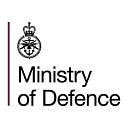Ever wondered what it takes to fly a Puma helicopter?
Flight Lieutenant Luke Foreman says it is a ‘bit of a niche skill!’
Flt Lt Foreman, 29, is one of the pilots ready for medical evacuations and transports in Scotland, based at Kinloss Barracks.
Puma helicopters and their crews are always ready to deploy here or overseas. The Puma is a useful helicopter because it can easily fit into the back of larger aircraft (like a C-17) and be flying again quickly after the C-17 lands.
Flt Lt Foreman says:
I started in the Air Force in 2013 and have been on the Puma Force for 2 years.
I’ve always wanted to join the military, and when I was at university, I wanted to be able to go abroad and see things. A lot of jobs in the military allow that, but being a pilot allows you to see it literally from a different viewpoint.
It’s a bit of a boyhood dream, my grandad was a pilot.
Being a military pilot, he has a lot of skills he can bring to COVID-19 tasks in particular. Flt Lt Foreman says:
We can draw across training or tasks we’ve done before. For example, we were in Oman 18 months ago on Exercise Saif Sareea delivering medevac out in the desert. A slightly different area of operations, but a similar job.
We’re familiar with working with RAF tactical med wing, having medics in the back, and relatively used to this standby, call-out routine.
Military training allows helicopter crews to adapt to being on-call for a range of missions. They already have training in decontaminating kit and evacuations before the pandemic began.
